本文由 BUREAU 授权mooool发表,欢迎转发,禁止以mooool编辑版本转载。
Thanks BUREAU for authorizing the publication of the project on mooool, Text description provided by BUREAU.
BUREAU:1982年,约瑟夫·博伊斯(Joseph Beuys)为卡塞尔文献展创作的《7000棵橡树》成为了艺术界的一个转折点。艺术家以非常简单的概念,成功地利用艺术语言和行动的力量,激活了自那以后不断增长的环境关注力。这件发生在20世纪80年代的事,在这十年间,见证了人类对地球上所有生物的暴力行为急剧增加。虽然从那以后,我们一直在努力培养自己的意识来对抗这种行动,但收效甚微。
BUREAU:Joseph Beuys’ 7000 oaks for the 1982 Documenta in Kassel constituted a turn in the art world. By a quite simple conceptual gesture the artist managed to use the power of art discourse and action to activate an environmental concern that has grown ever since. This happened in the1980s, the same decade which saw a very substantial acceleration of violence towards all living beings on earth. Ever since, we have been trying to develop our consciousness to counter this movement, with a relatively poor success.

关于他的艺术行为,最有趣的问题之一是,它构成了一种与卡塞尔市的真实契约。但正是通过这种契约关系,这幅作品获得了它的全部力量。它的副标题同样引导着今天的我们:以城市绿化代替城市管理。当时这个巨大的项目寻找资金的讨论、争论和困难使它成为政治议程的一个非常时刻或关键点,这也可能是该提案中最有力的论据。博伊斯从他的艺术家立场和姿态出发,预测了一个即将成为政治和公民问题的事情:植物和动物(除了人类以外)世界是城市呼吸至关重要的必需品。
One of the most interesting issues about his art gesture is that it constituted a real contract with the city of Kassel. It was through the engagement of a contractual relation that the piece acquired all its strength. Its subtitle was important as well: City forestation instead of City administration. The discussions, polemics, and difficulties to find the funds for this enormous project had the consequence of it being treated exactly as a moment or point of a political agenda. This is probably the most powerful argument of the proposal. From his artist position and posture, Beuys anticipated what was going to become a political and civic issue: the presence of the vegetal and animal (other-than-human-living-beings) world in urban fabrics as a breathing, vital necessity.
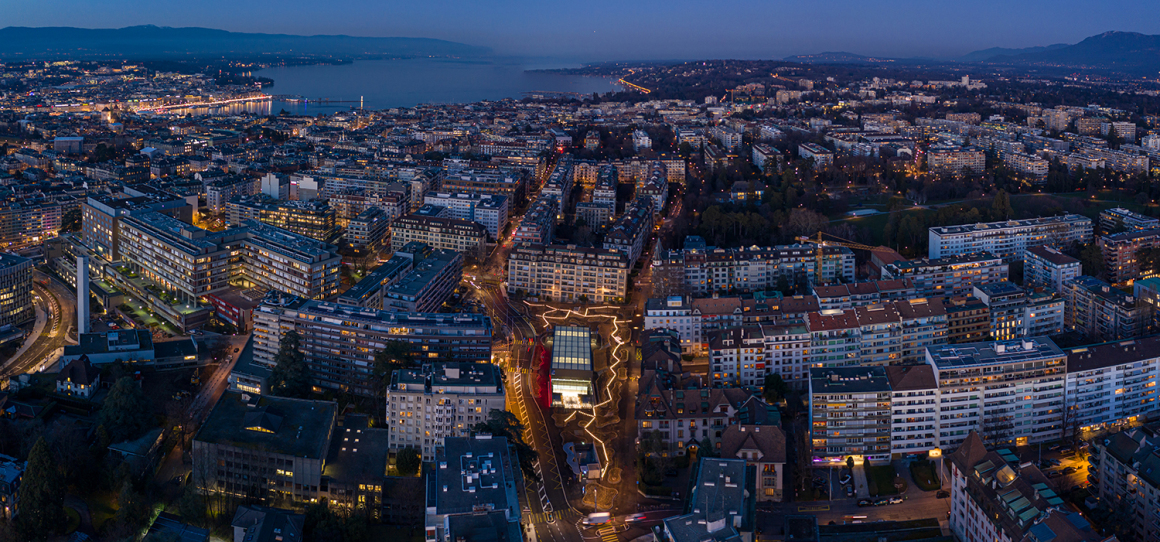
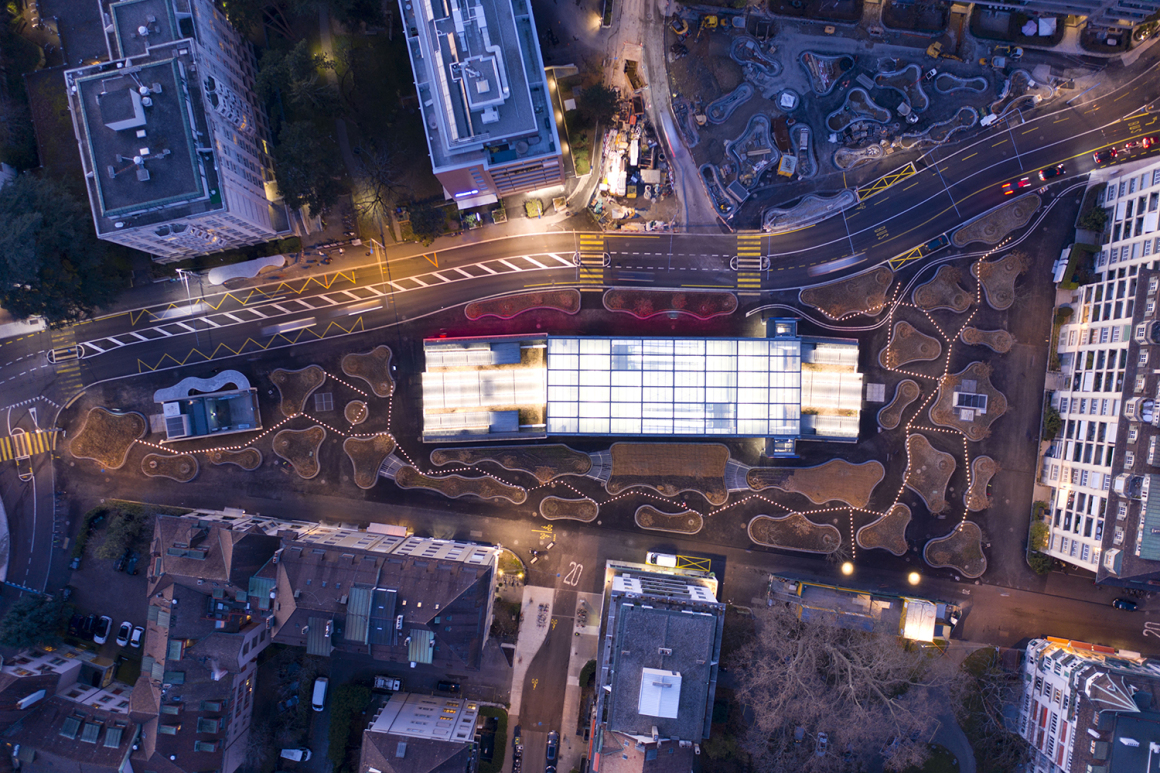
对此人们还有另一种观点:共存。我们依靠其他生物将二氧化碳转化为可呼吸的氧气。我们也可以把这些美丽的有机转化机器看作是我们的伙伴,与它们共同生活在一起。
不太显眼,或壮丽、或充满活力的植物是我们生活的一部分,而我们的生活也与它们的生活相对应。法国植物学家弗朗西斯·哈雷(Francis Halle)曾广泛谈论过树木的判断力,它们是如此重要的存在,并不会对其他更小、更弱的生物产生任何傲慢的态度。树木就是我们最温和的伙伴。
There is another perspective on this: co-existence. We depend on other living beings to transform the atmospheric air into breathable oxygen. We can also think of these beautiful transforming organic machines as companions, creatures that live with us.
The discreet, sometimes majestic, dynamic presence of plants is part of our lives and our lives are symmetrically part of theirs. French botanist Francis Halle has talked extensively about the discretion of trees, how their rather important presence does not involve any sort of arrogance over other smaller and less powerful beings. Trees are peaceful companions.
城市通过活力和突变而更新、进化;它们成长为一种比仅仅由惰性材料和机械流体组成的世界更复杂的自然界。所有这些都是交织在一起的“事物”和“生命”的一部分,它们相互作用,使城市成为一个紧张、对比和令人兴奋的组织,而我们大多数人都必需复合在这个组织中。
该日内瓦CEVA站项目就延伸或融入了这种多元关系的理念。这里由Jean Nouvel和Eric Maria设计的新基础设施,作为重新定义日内瓦地区可达性车站网络的一部分,与我们的干预是一种相互陪伴的关系。火车从地下经过,人们上上下下,穿过基础设施的垂直土壤层,就能发现这个由138棵橡树和数百棵其他植物组成的有机环境。
Cities renew, evolve through dynamism and urban mutation; they grow as a more complex nature than one just made out of inert materials and mechanical fluids. All of it is part of an intertwined ensembles of “things” and beings that interact and make the urban fabric a tense, contrasted and exciting tissue where most of us enjoy being in a composite togetherness.
The project of the CEVA station in Geneva extends, or installs itself within this idea of multifaceted relationships. The new infrastructure, thought and designed by Jean Nouvel and Eric Maria as a piece of a network of stations redefining the Geneva region accessibilities, relates to our intervention, in a companionship connection. Trains pass by, in the underground, and people go up and down, traversing the vertical layers of the infrastructural soil, to discover a growing condition, composed of 138 oak trees and hundreds of other planted companions.

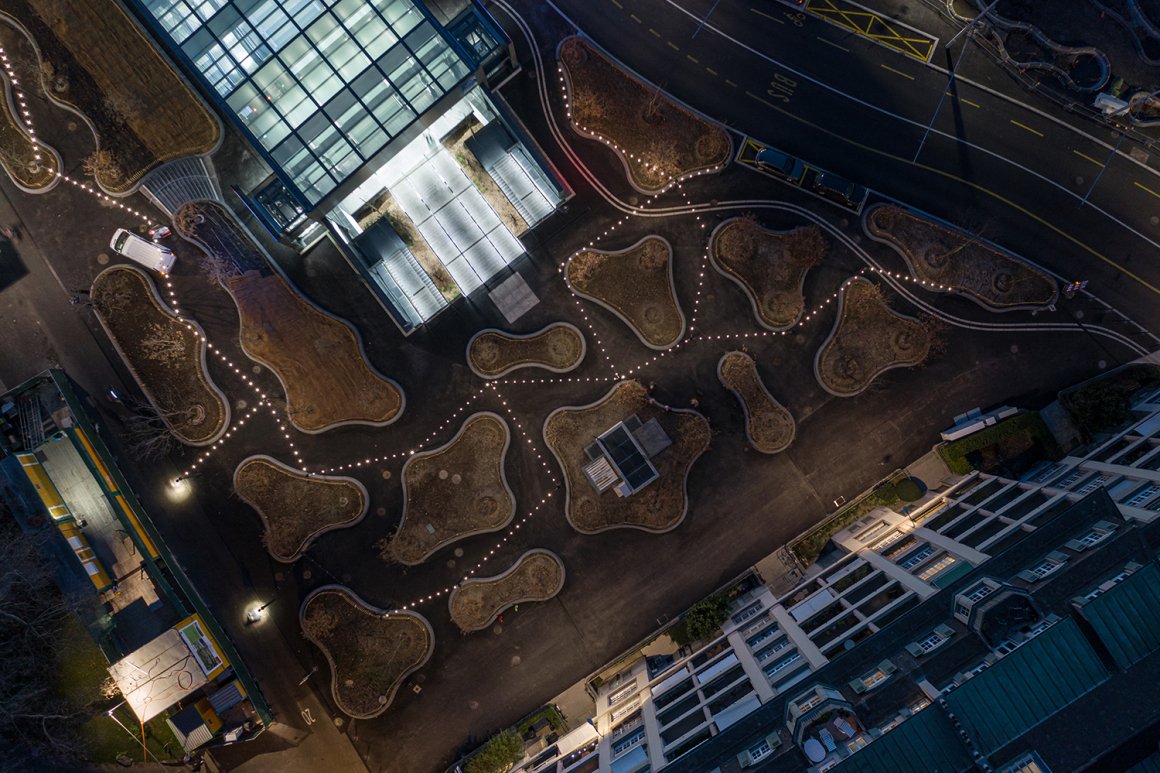
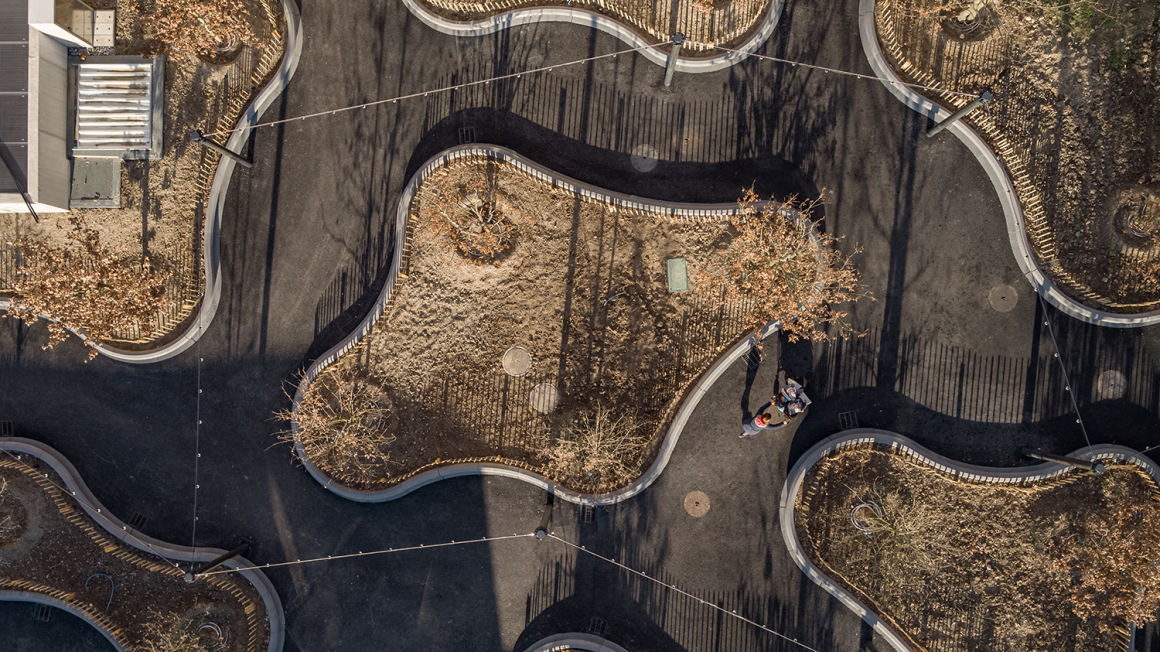
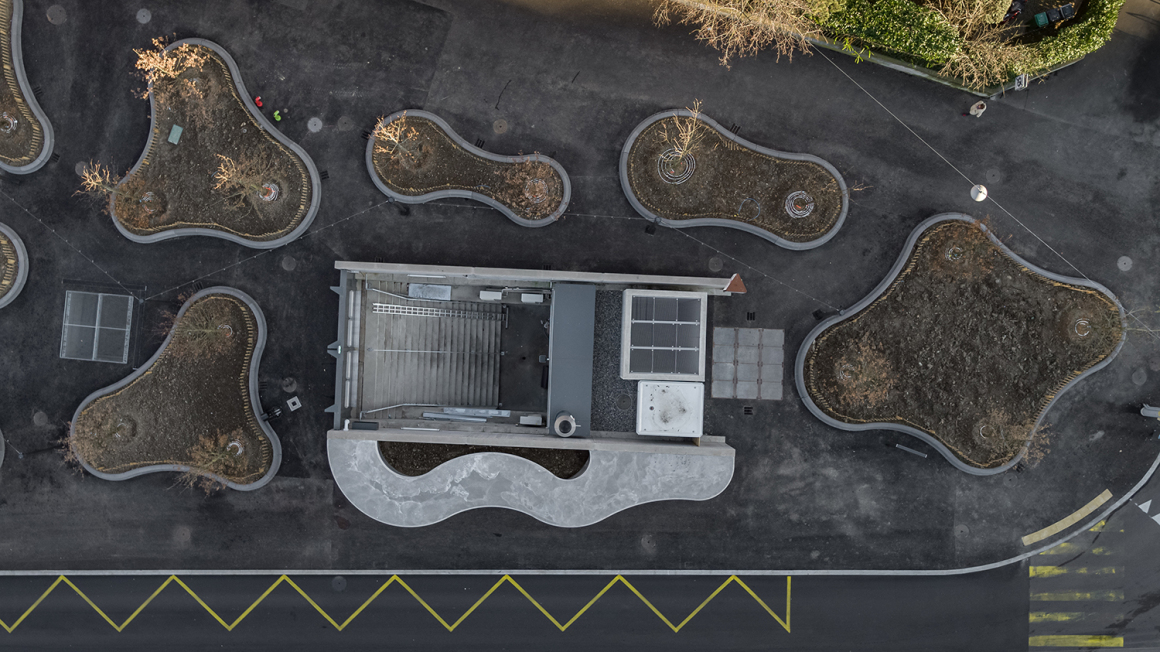
▼穿越楼梯,数百棵植物组成的有机环境浮现在眼前 People go up and down, traversing the vertical layers of the infrastructural soil, to discover a growing condition, composed of 138 oak trees and hundreds of other planted companions.

新的区域铁路线本着“只”种树的简单理念,模仿从地下的水流,将线路调整为缓慢的蜿蜒线,降低人们的出行速度,感受在树木及其密集种植的土地上“漫游”的体验。
The simple idea of “just” planting trees, accompanies the arrivals and departures of the new regional train line. Flows from the underground transform, adapt their pace into slower meandering routes, proposing a sort of “flaneur” experience, under and with the trees and their intense planted ground.
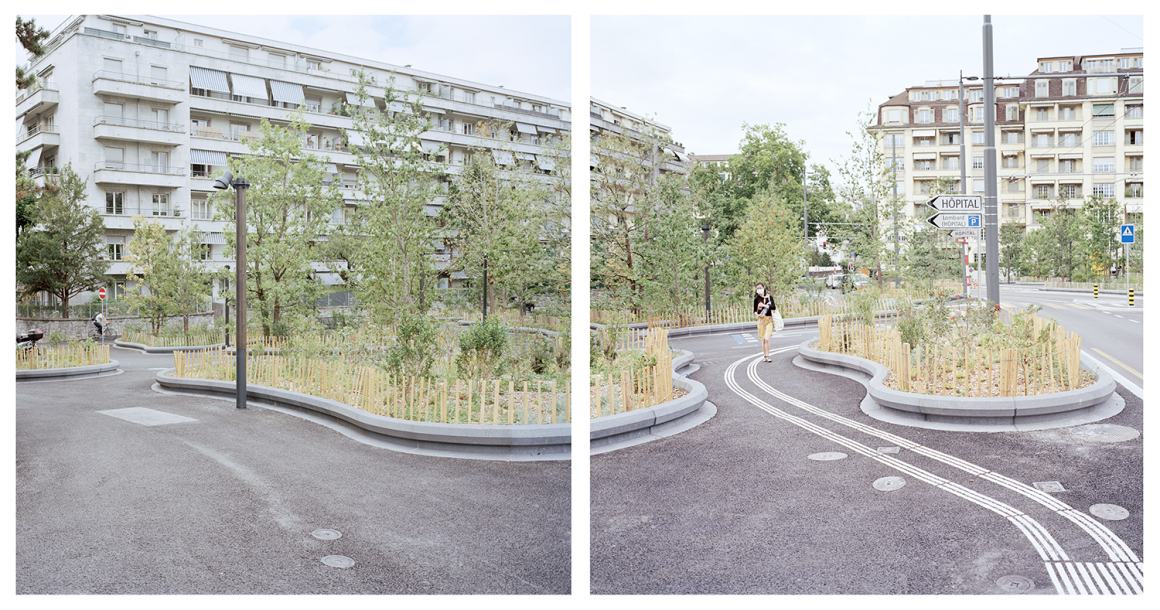
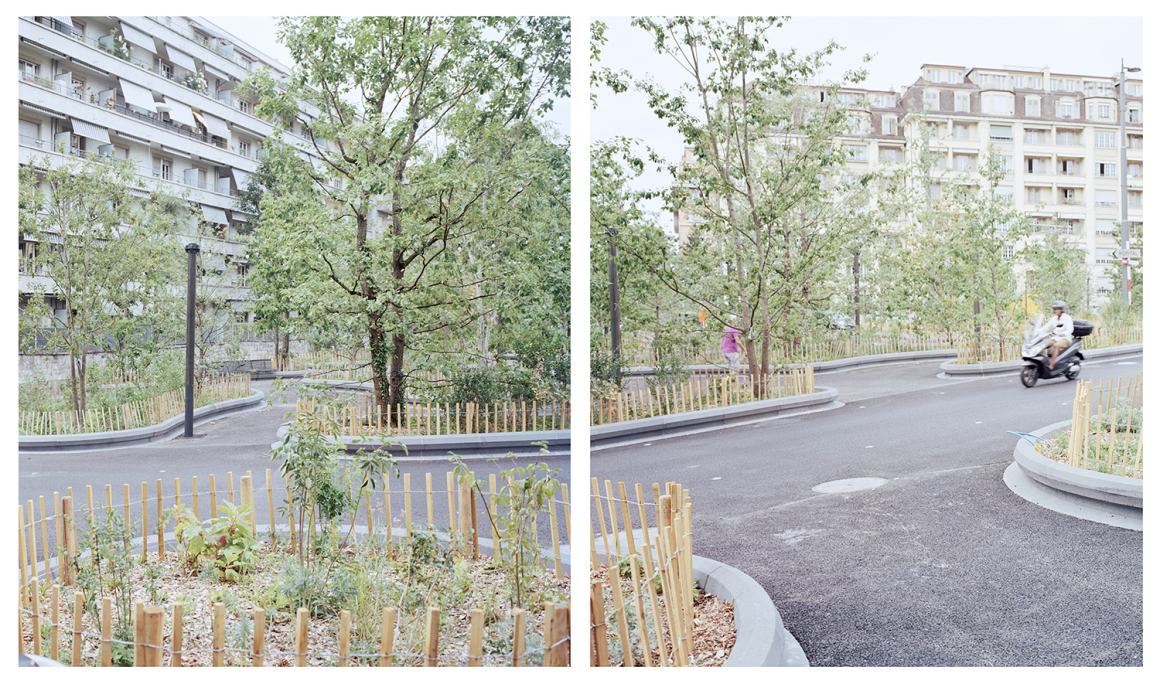
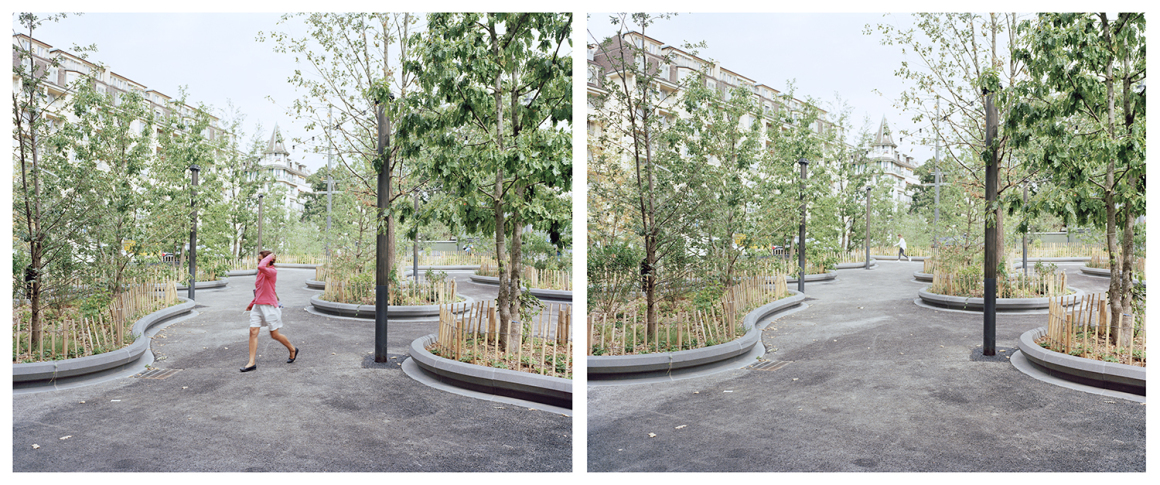
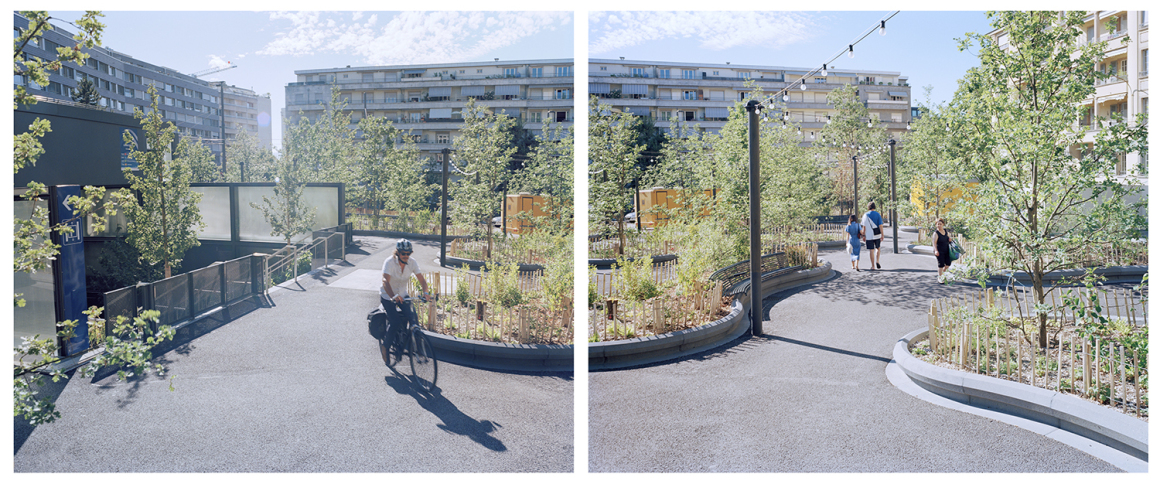
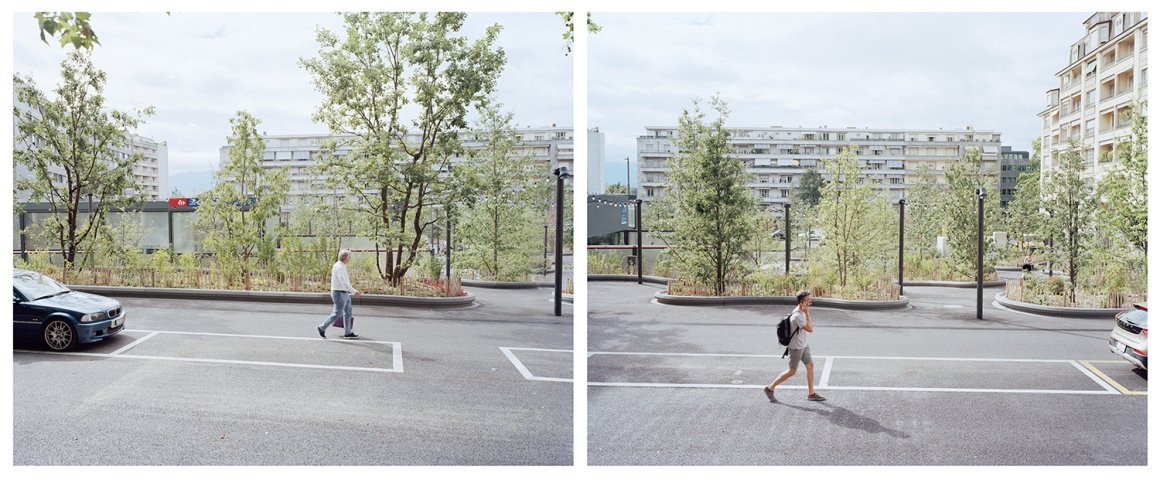
这些微型生态系统被安置在专门的“岛屿”上,人类不一定可以进入,因为他们在别处有足够的空间。人们可以坐在这些岛屿的边界上,或专门的城市家具上,享受他们的休闲和聊天时光。
These micro eco-systems are hosted in dedicated islands, not necessarily accessible to humans. They have enough space elsewhere. They can sit, enjoy their pauses and chats on the borders of these islands and on dedicated urban furniture.
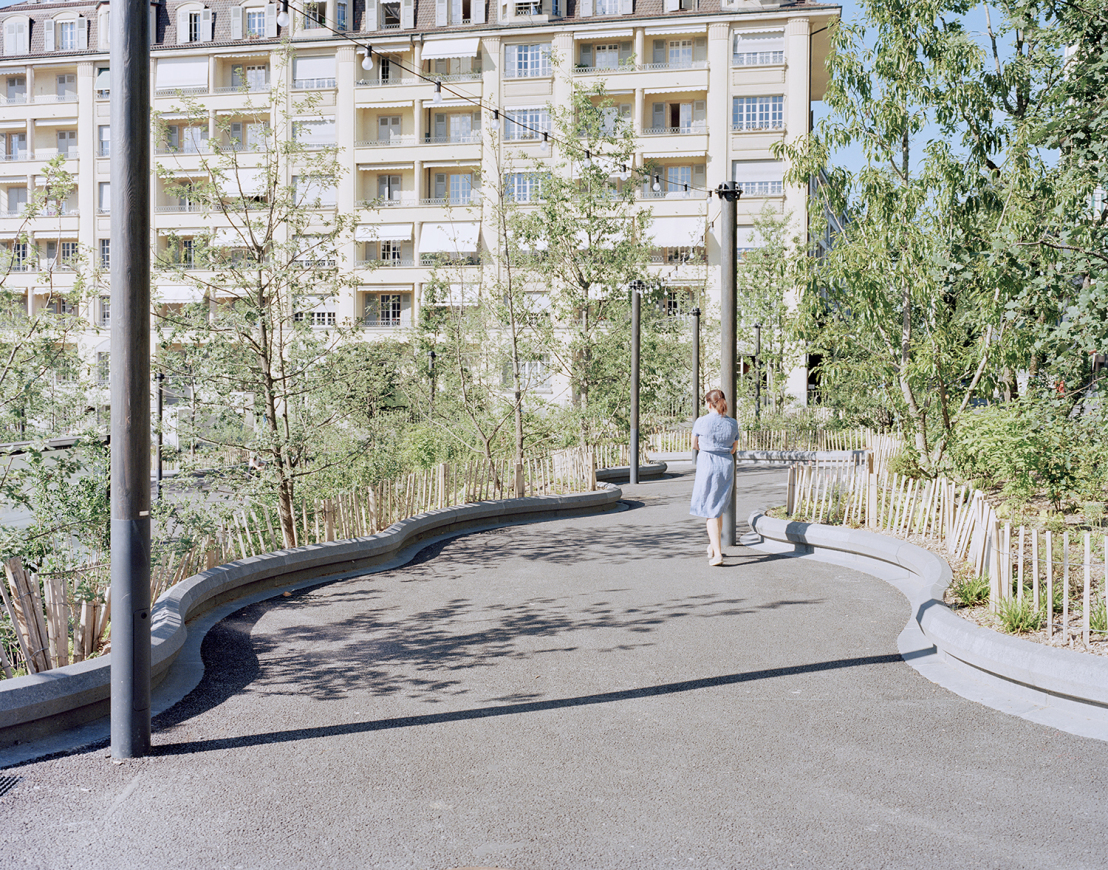
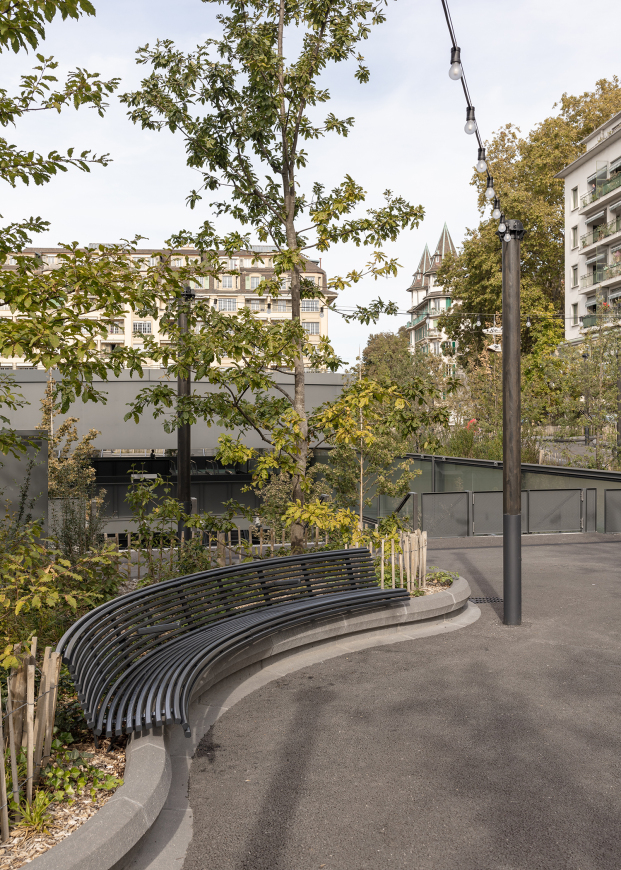

随着时间、耐心和经验的累积,这个地方必将成为一个独特而美丽的生态系统,在这里,人、树、微生物、昆虫和其他植物将和平共处。虽然我们中的一些人也仍将匆忙地走进自动扶梯,乘坐下一班火车,但总有另一些人将在火车线灯光上方慢慢地呼吸,成长,讨论,富有活力地观察这个世界。
With time, patience and experience, the place will become a specific and beautiful eco-system, where people, trees, microbes, insects, other plants will co-exist peacefully. Some of us will still be in a hurry and dig down the escalators to take the next train, some others will breathe slowly observing from above the red lights of the train lines for decades, growing, discussing, and looking at the world resiliently.
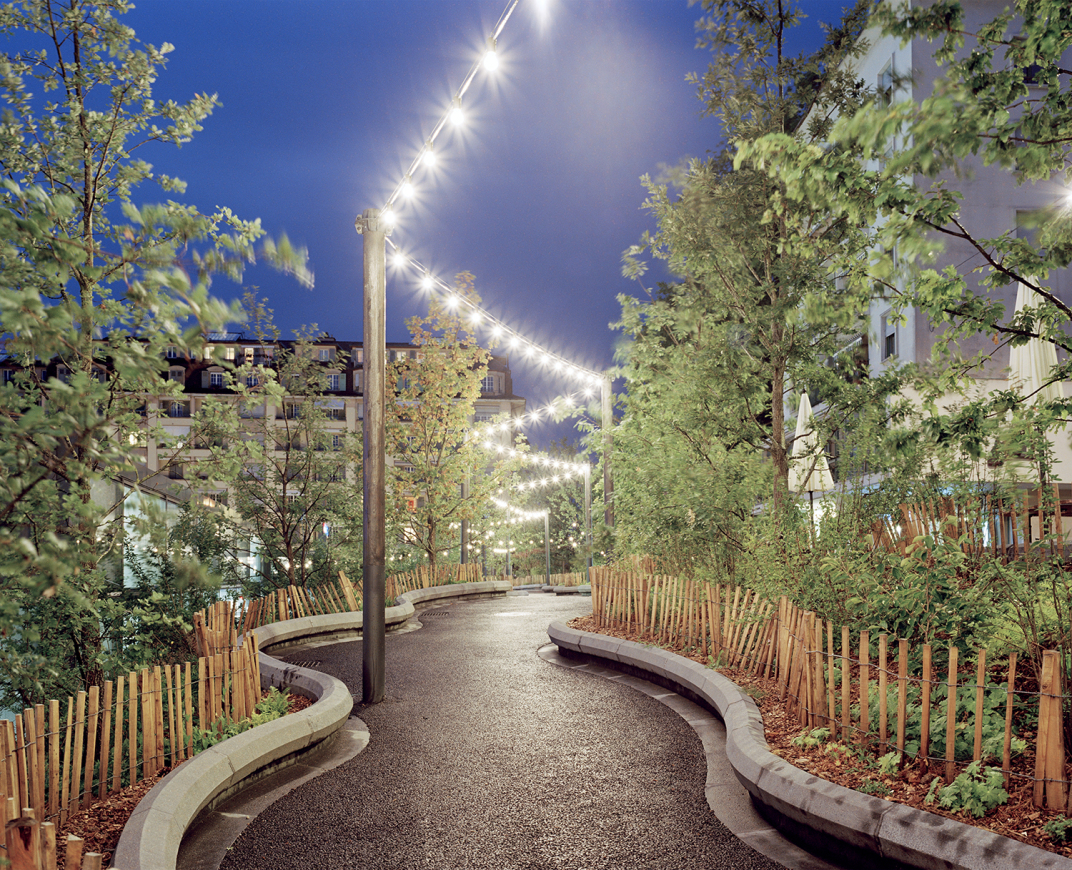
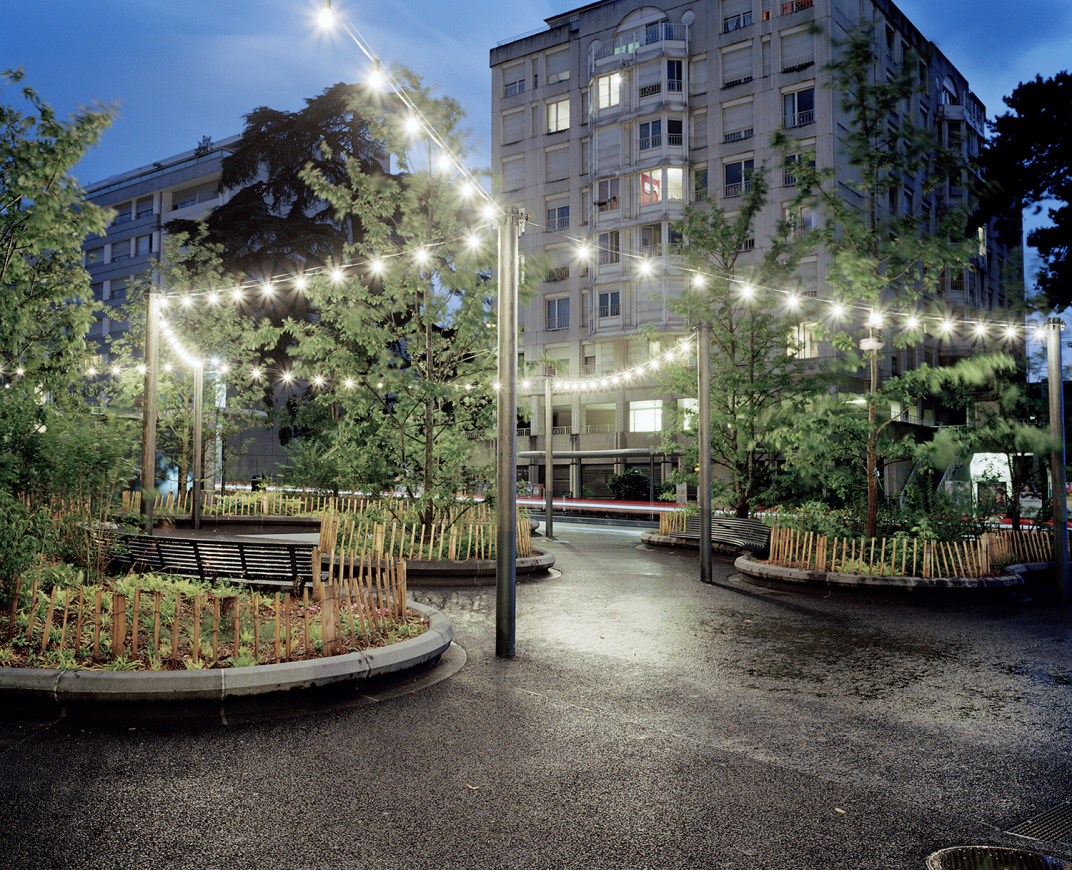
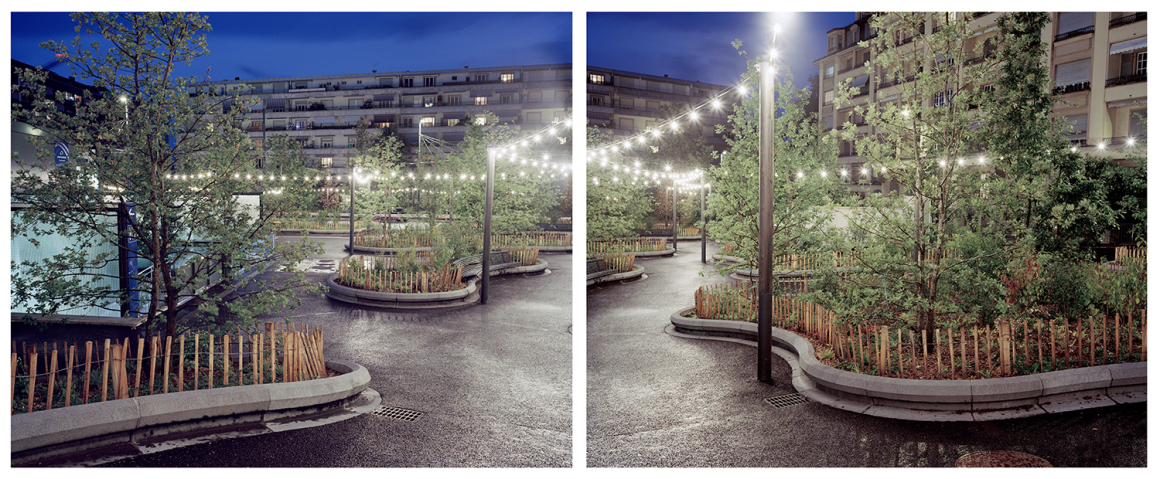
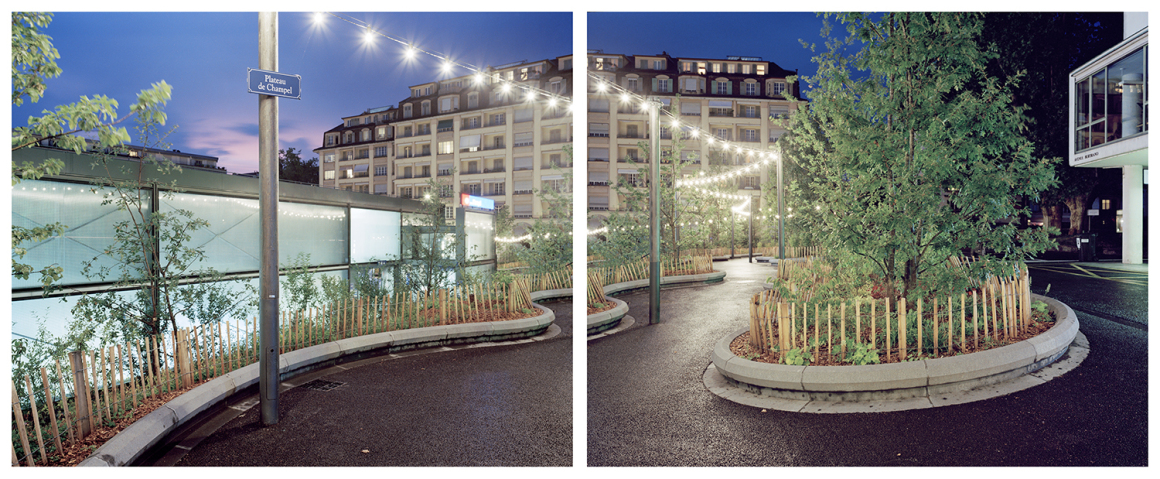


项目中共使用了135棵橡树(栎属),包括麻栎、蓖麻栎、藜栎、匈牙利橡树、石栎、毛栎、蔷薇栎。
239种多年生植物和灌木:大花六道木、圆叶沙楝、耧斗菜、Powis Castle蒿,刺檗,风铃草,匍匐風鈴草,叶草,臺草,墨西哥橘,鱼鳔槐、大果山茱萸、欧洲红瑞木、少花蠟瓣花、真堇、瑞香、歐洲鱗毛蕨、加勒比飛蓬、地中海大戟,地锦草,乌蔹莓、草莓、香叶老鹳草、大花老鹳草、红老鹳草、金缕梅、秋水仙‘木立花’、红绣球花、槲叶绣球花、圆齿冬青、金叶女贞、金叶忍冬、银花忍冬、露珠忍冬、金缕梅、牛至、异叶桂花‘金钱草’、桂花、红叶夹竹桃。
135 oak trees employed: Quercus Acutissima, Quercus Castaneifolia, Quercus Cerris, Quercus Frainetto, Quercus Petraea, Quercus Pubescens, Quercus Robur.
7’239 perennial plants and shrubs employed: Abelia grandiflora, Amelanchier rotundifolia, Aquilegia vulgaris, Artemisia arb.‘Powis Castle‘, Berberis vulgaris, Campanula latifolia, Campanula rapunculoides, Carex foliosissima, Carex ornithopoda, Choysya ternata, Colutea arborescens, Cornus mas, Cornus sanguinea, Corylopsis pauciflora, Cowdalis lutea, Daphne laureola, Dryopteris filix-mas, Erigeron karwinskianus, Euphorbia characias ssp. wulfenii, Fragaria vesca, Geranium cantabrigiense, Geranium macrorrhizum, Geranium sanguineum, Hamamelis mollis, Hedera colchica ‘Arborescens’, Heuchera sanguinea, Hydrangea quercifolia, Ilex crenata, Ligustrum ovalifolium, Ligustrum vulgare ‘Atrovirens‘, Lonicera nitida, Lonicera pileata, Luzula nivea, Malva moschata, Origanum vulgare, Osmanthus heterophyilus ‘Gulftide‘, Osmanthus x burkwoodii, Phlomis russeliana (samia), Polystichum aculeatum, Polystichum setiferum, Rhamnus catharcticus, Ribes alpinum, Staphylea pinnata, Stipa gigantea, Viburnum lantana, Waldsteinia ternata.
▼施工过程 Construction
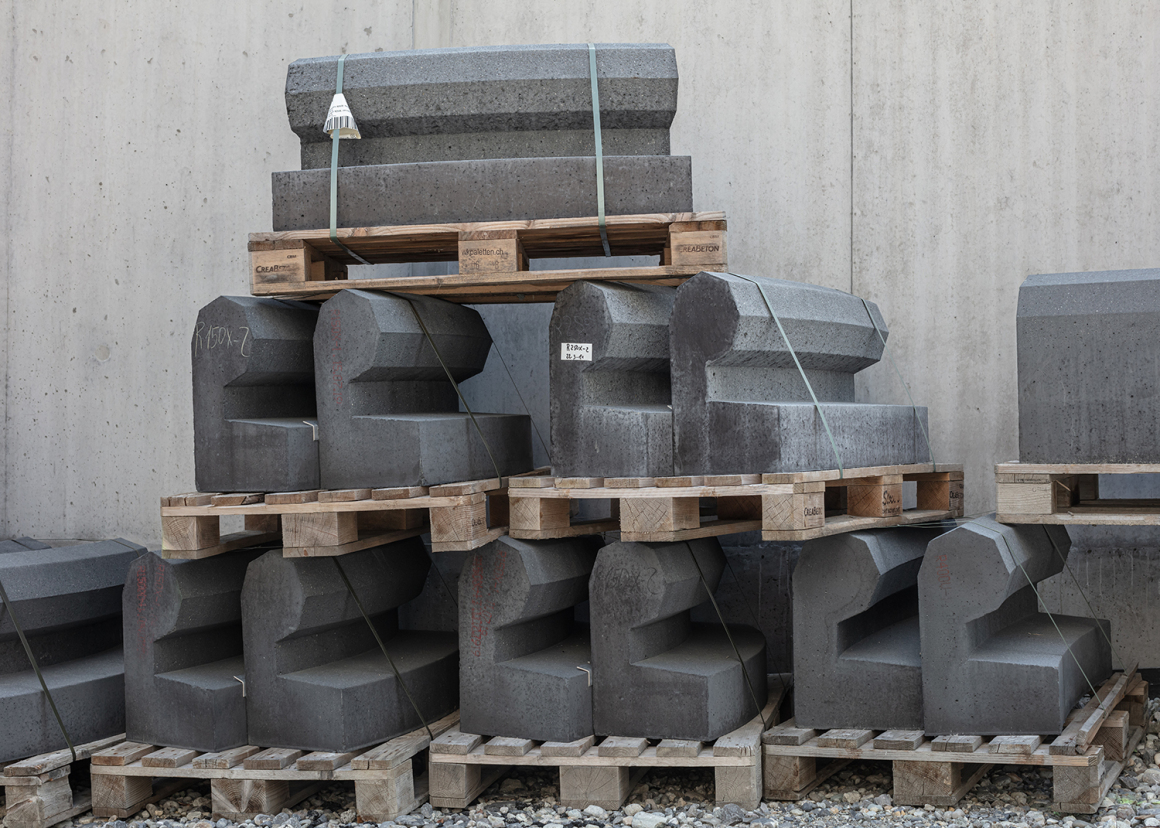
▼项目总平面 Master Plan
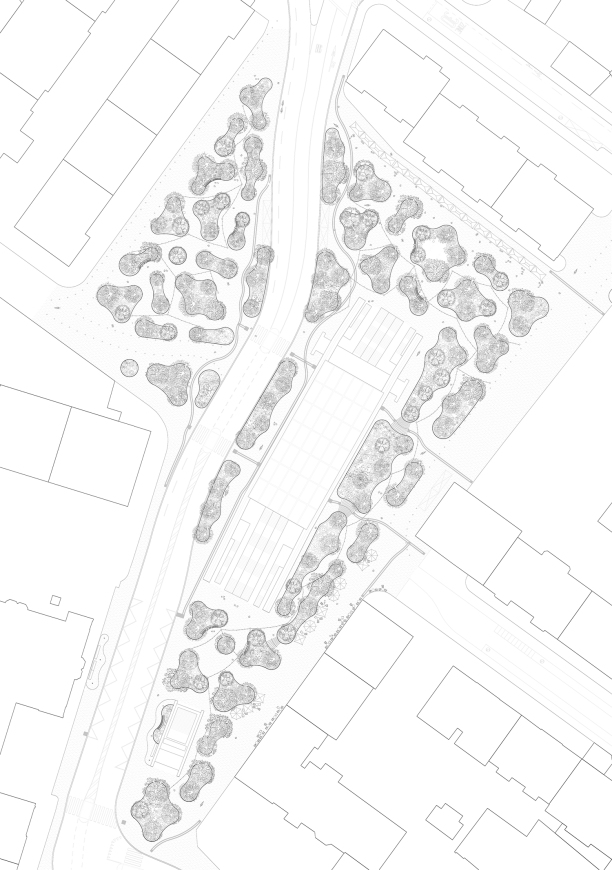
▼细节平面图 Detail Plan

▼其他设计图 Other drawings
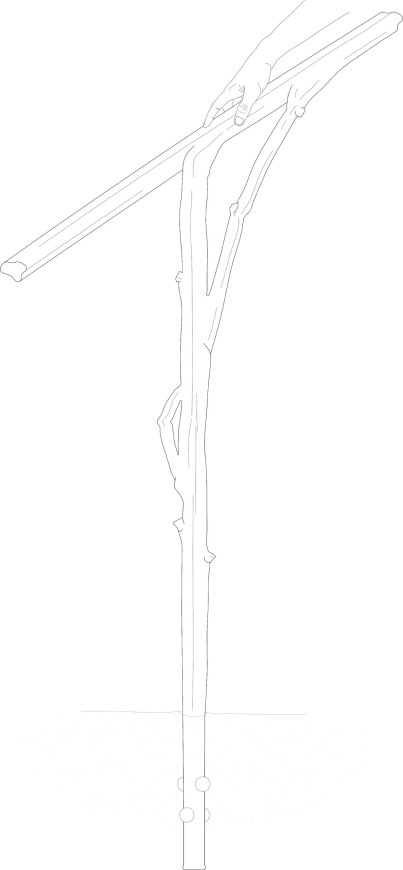
项目名称:7000 OAKS
完成:2020年
面积:14225平方米
项目地点:日内瓦(CH)
设计公司
竞赛阶段:BUREAU (Daniel Zamarbide)与Leopold Banchini Architects合作
建设阶段:BUREAU | Daniel Zamarbide, Carine Pimenta, Galliane Zamarbide
设计公司网址:https://bureau.ac/
联系邮箱:press@bureau.ac(新闻、媒体咨询) 或 info@bureau.ac(通用问询)
主创建筑师:Jolan Haidinger, Joana Croft, Vanessa Pointet
设计团队:Anna Scorretti, Lilian Pala, Luísa Pires, Mélanie Ganino, Pauline Tondreau, Peter Bauer, Thibault Pierron, Andreina Mosquera
客户:Ville de Genève
合作方:Thomas Jundt ingénieurs Civils SA, Alfred Forster AG
摄影:Dylan Perrenoud – Guillaume Collignon
Project name: 7000 OAKS
Completion Year: 2020
Size: 14’225 m2 gross
Project location: Geneva (CH)
Design Firm
Competition phase: BUREAU (Daniel Zamarbide) with Leopold Banchini Architects
Realization phase: BUREAU | Daniel Zamarbide, Carine Pimenta, Galliane Zamarbide
Website: https://bureau.ac/
Contact e-mail: press@bureau.ac (press, media inquiries) or info@bureau.ac (general inquiries)
Lead Architects: Jolan Haidinger, Joana Croft, Vanessa Pointet
Design Team: Anna Scorretti, Lilian Pala, Luísa Pires, Mélanie Ganino, Pauline Tondreau, Peter Bauer, Thibault Pierron, Andreina Mosquera
Clients: Ville de Genève
Collaborators: Thomas Jundt ingénieurs Civils SA, Alfred Forster AG
Photo credits: Dylan Perrenoud – Guillaume Collignon
更多 Read more about: BUREAU


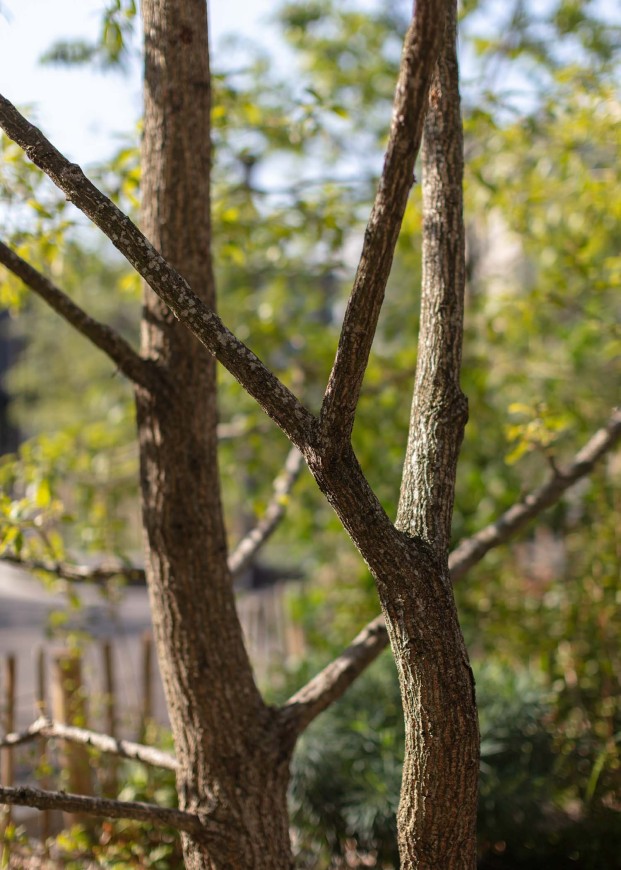




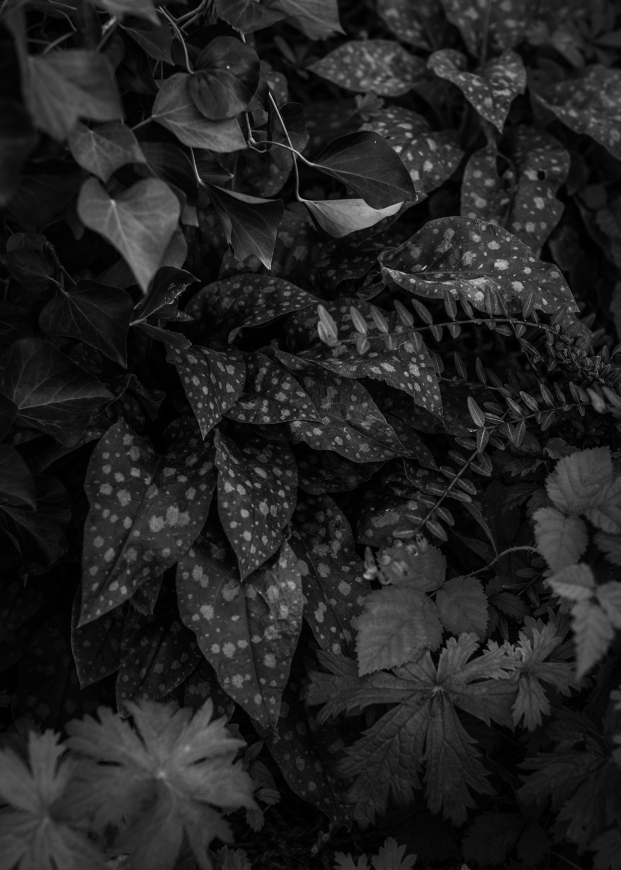
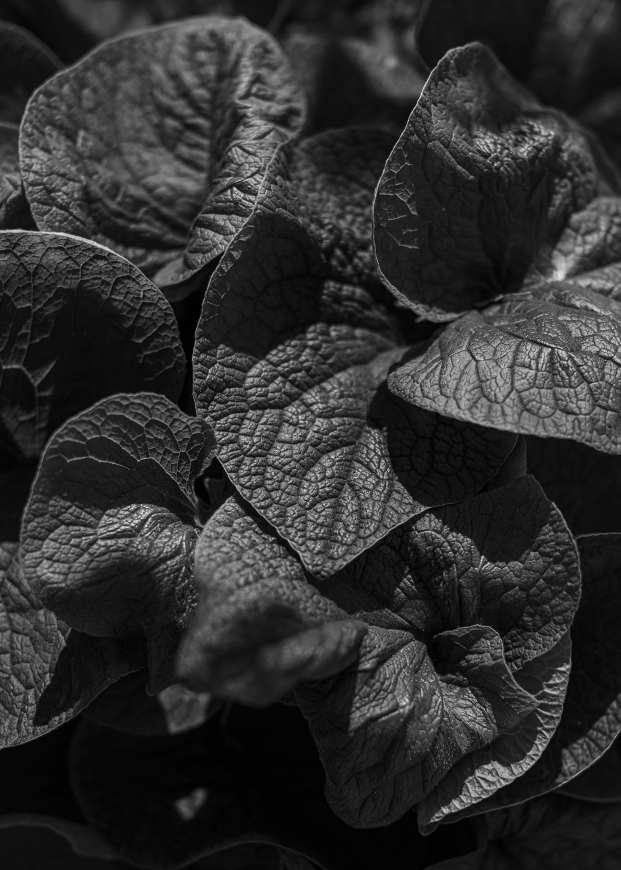
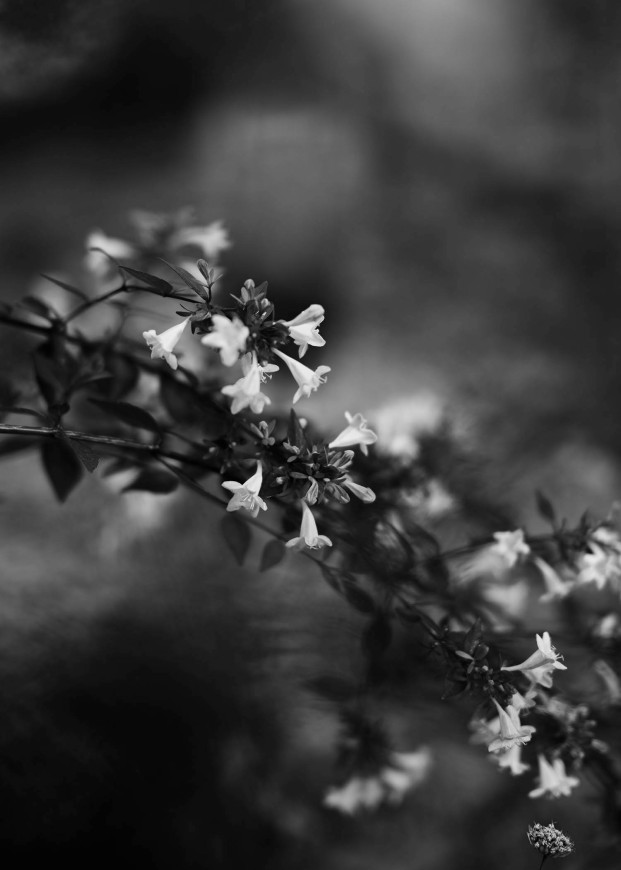
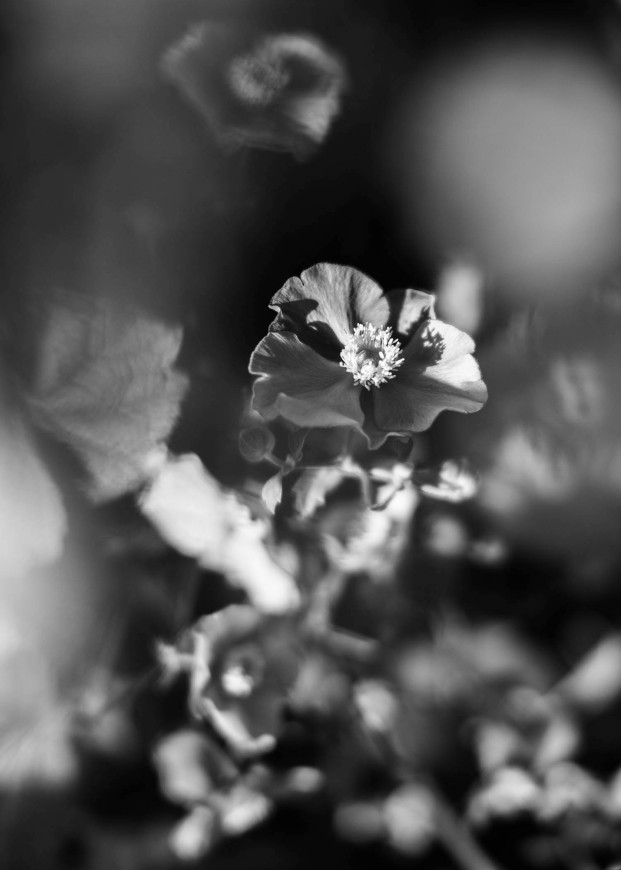
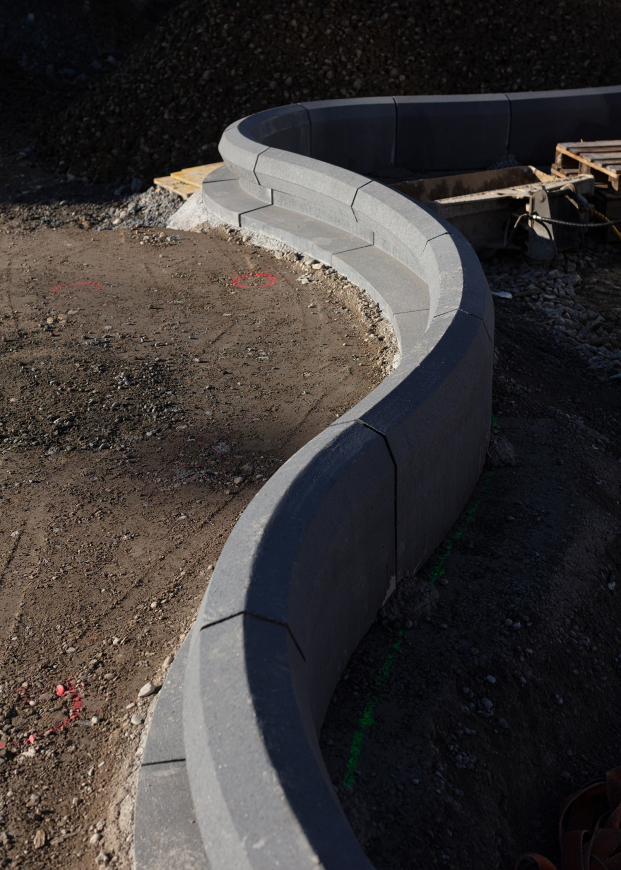
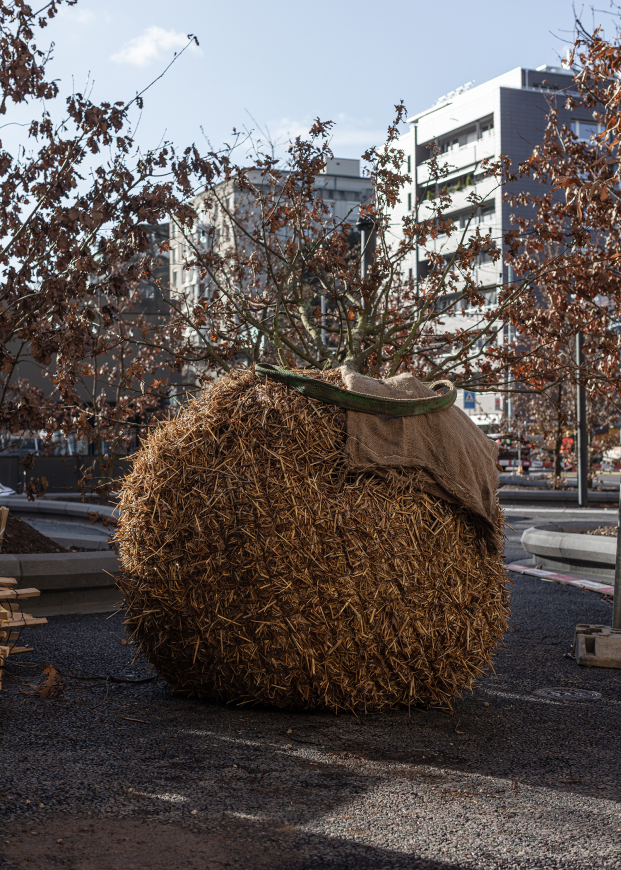
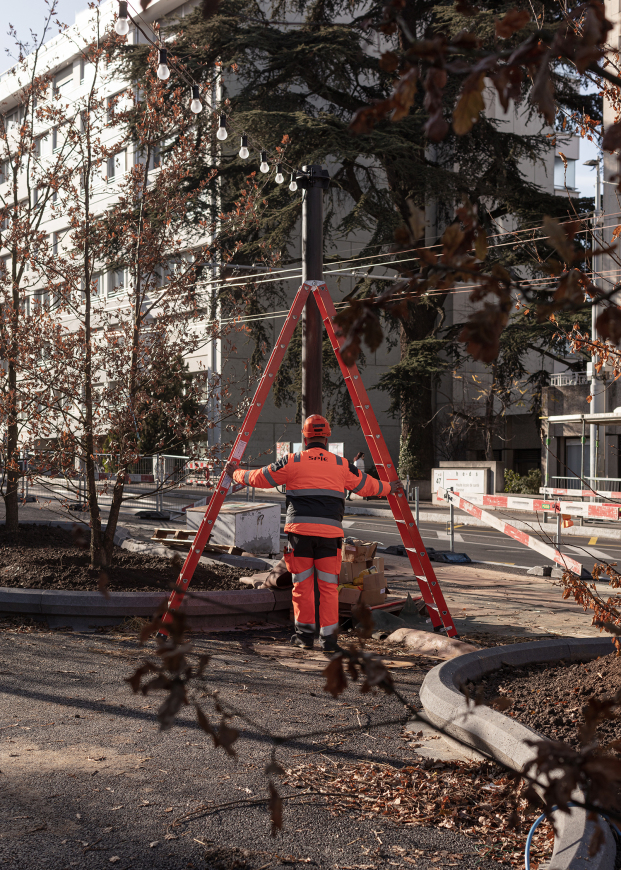
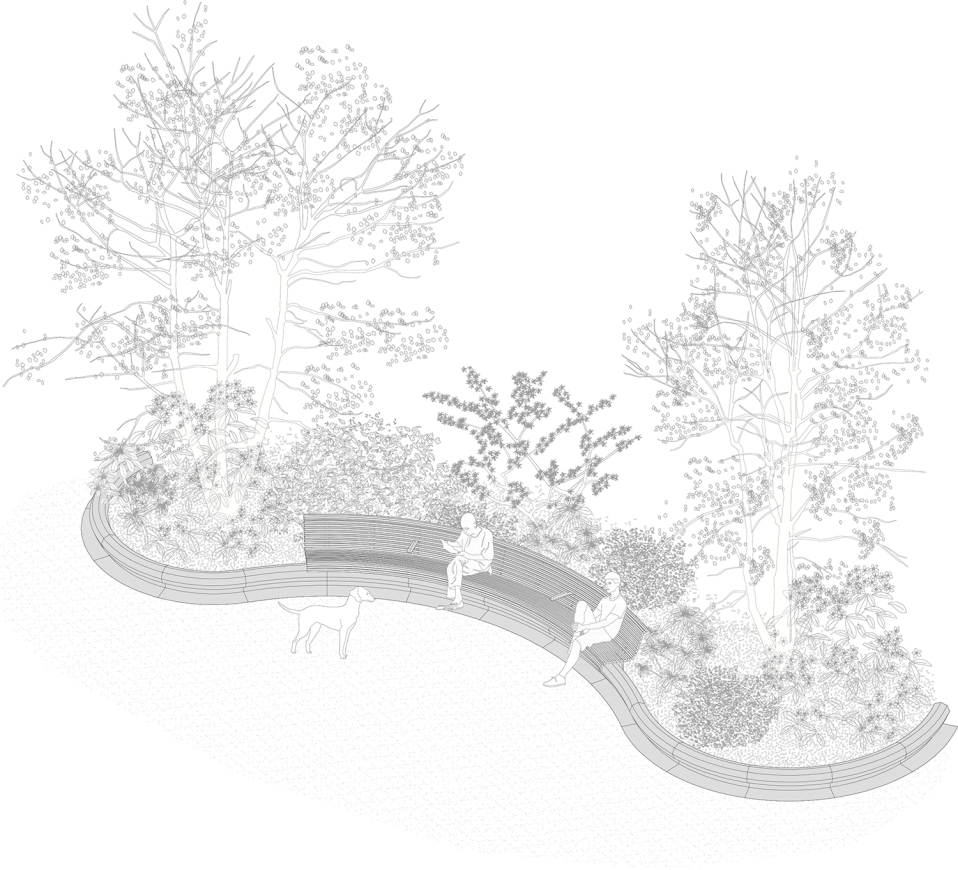
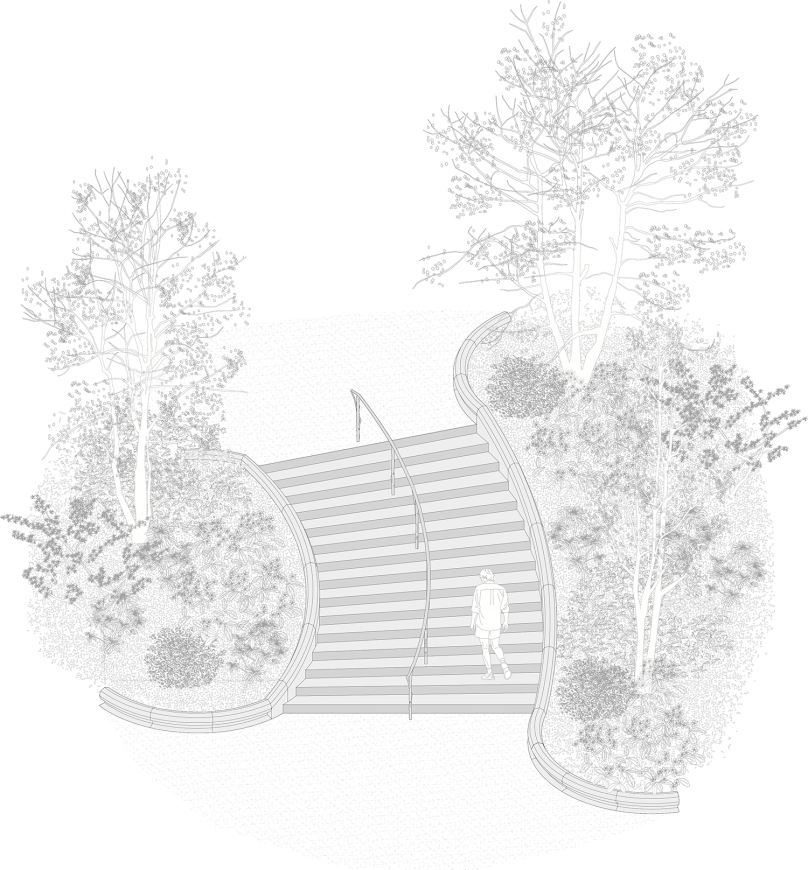

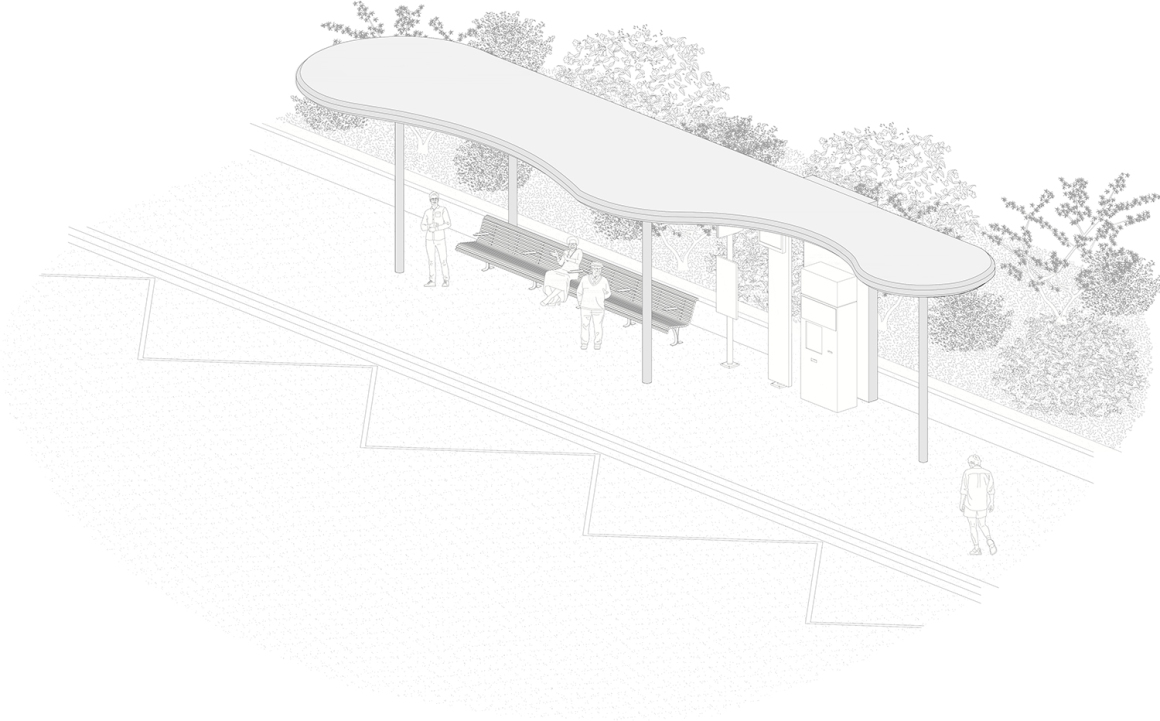


0 Comments